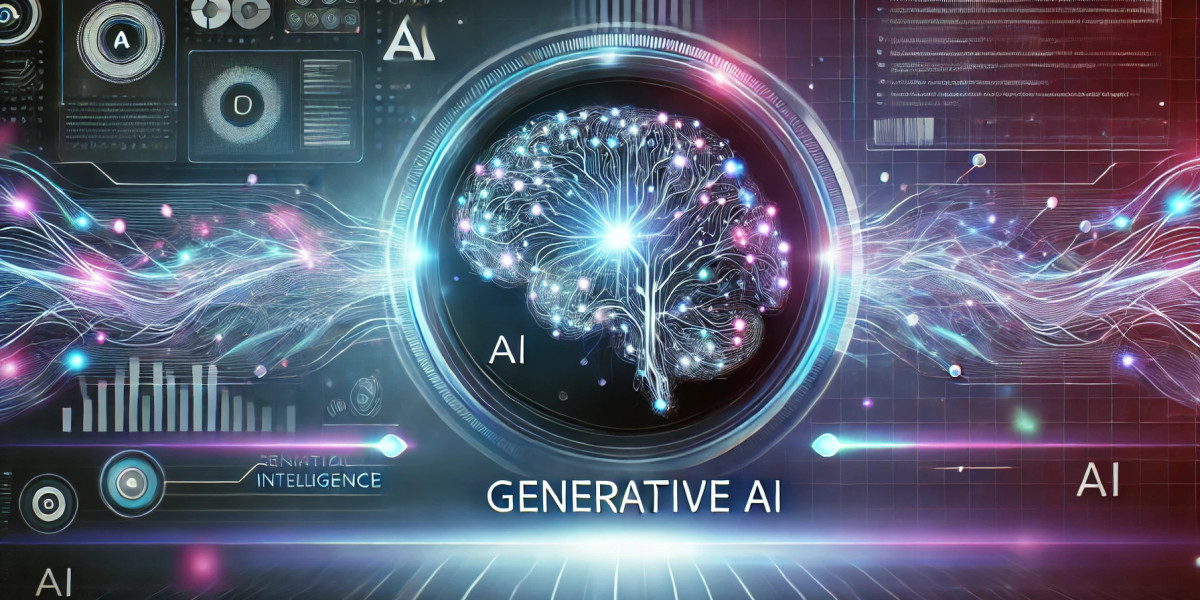Generative AI has rapidly emerged as a groundbreaking technology with the potential to reshape numerous industries. It refers to artificial intelligence systems designed to create new content, from text and images to music and even code. Over the last few years, the advancements in generative AI tools have made it possible to generate realistic outputs that often rival human creativity. However, as this technology evolves, it brings with it new applications, tools, and ethical concerns that need to be addressed. In this article, we will examine the rise of generative AI, its various applications, the tools behind it, and the ethical dilemmas it introduces.
The Applications of Generative AI
Generative AI is revolutionizing multiple sectors by providing innovative solutions that were previously unimaginable. One of the most prominent areas of application is content creation. AI-powered tools can now write articles, produce artwork, and even compose music, often indistinguishable from human-made creations. These capabilities are particularly valuable for industries like marketing, entertainment, and publishing.
In the field of writing, AI can generate articles, social media posts, and even poetry. For businesses, this offers an efficient way to create large volumes of content quickly and cost-effectively. Similarly, in the entertainment industry, AI is being used to generate scripts, develop characters, and even create video games, where it helps to develop complex storylines and environments. Not only does this improve the efficiency of production, but it also lowers costs.
Another growing application of generative AI is in design and visual art. AI tools can generate realistic images, 3D models, and even entire scenes from scratch, based on user inputs. Artists and designers use these tools to expand their creativity, with AI assisting in tasks such as ideation, style transfer, and image enhancement. In comparison to traditional methods, AI-powered design tools significantly reduce the time required to produce professional-level content.
Moreover, AI is making strides in coding and software development. Generative AI systems can now write code based on a set of instructions or even troubleshoot and debug existing code. This has the potential to streamline software development processes, reducing the need for manual coding and allowing developers to focus on more complex tasks.
The Tools Behind Generative AI
Generative AI relies on sophisticated algorithms and models that enable machines to produce new content. One of the most widely used techniques is known as deep learning, which is a subset of machine learning. Deep learning models, such as Generative Adversarial Networks (GANs) and Transformer models, are trained on vast datasets to understand patterns and structures in the data. Once trained, these models can generate new content that mimics the patterns they've learned.
For instance, GANs consist of two neural networks—a generator and a discriminator—that work together. The generator creates new data, while the discriminator evaluates its authenticity. Through this back-and-forth process, GANs learn to generate increasingly realistic content. This technique is commonly used in image and video generation, where the output can appear remarkably lifelike.
Transformers, on the other hand, are primarily used in natural language processing (NLP). The Transformer architecture powers models like OpenAI's GPT series, including the well-known GPT-3. These models have been trained on massive datasets and can generate coherent, contextually relevant text based on a prompt. They can be used in a variety of applications, from writing to code generation.
Despite the impressive capabilities of these tools, they still require a significant amount of computational power to train and operate effectively. This makes it difficult for smaller companies or individuals to develop their own generative AI models without access to substantial resources. However, as generative AI becomes more mainstream, many cloud-based services have made these tools more accessible, offering them as APIs or subscription-based platforms.
Ethical Concerns in Generative AI
As generative AI continues to evolve, its rapid adoption raises a host of ethical issues. One of the most significant concerns is the potential for misuse. Generative AI tools can be used to create misleading or harmful content, such as deepfakes, fake news, or misleading social media posts. This has already been seen in instances where AI-generated videos have been used to manipulate public opinion or harm individuals.
Likewise, there are concerns about intellectual property. As AI systems generate new content based on pre-existing works, questions arise about ownership and copyright. If an AI generates an image or a song based on millions of existing pieces of content, who owns the rights to the output? This has sparked debates among creators, legal experts, and policymakers about how intellectual property laws should adapt to address these new challenges.
Similarly, generative AI's role in job displacement is an ongoing concern. As AI systems become more proficient at performing tasks that were previously handled by humans, such as writing, design, and even coding, many worry about the impact on employment. While AI has the potential to create new jobs in the tech sector, it may also lead to the obsolescence of certain professions, especially in creative fields. Consequently, workers in these industries may need to adapt to new roles or gain skills in managing AI-driven processes.
Despite these challenges, generative AI also has the potential to address various societal issues, such as improving accessibility and supporting education. AI can assist individuals with disabilities by generating text-to-speech or visual content, making information more accessible. Additionally, AI-powered educational tools can personalize learning experiences for students, tailoring content to individual needs.
A Case Study in Generative AI's Impact on Society
One of the more recent and controversial applications of generative AI has been the creation of AI companions, such as the AI Girlfriend. These virtual beings use advanced machine learning algorithms to simulate conversation, companionship, and even romantic interactions. While these AI companions offer companionship to individuals who may feel isolated or lonely, they also raise important ethical questions.
For example, can AI-generated relationships be considered genuine? How might these virtual relationships impact users' ability to form meaningful connections in the real world? As generative AI becomes more sophisticated, these types of questions will continue to surface, highlighting the complex relationship between technology and human emotion.
The Role of AI in Controversial Topics
Another area where generative AI intersects with ethically questionable content is in the realm of adult entertainment, including the creation of AI bondage scenarios. AI-generated content in this area can be used to create explicit material that, in some cases, may not adhere to ethical guidelines regarding consent and representation. While AI can generate such content based on data inputs, it raises concerns about exploitation and the normalization of harmful behaviors.
In comparison to traditional adult content, which typically involves human actors, AI-generated adult material may blur the lines of consent and responsibility. Moreover, there is the question of whether such content can perpetuate unhealthy attitudes toward relationships and sexuality. Consequently, there is an ongoing debate about where to draw the line between artistic freedom, entertainment, and responsible AI use.
The Future of Generative AI: Moving Forward with Caution
As generative AI continues to evolve, it will undoubtedly have a profound impact on many aspects of society. However, it is crucial for both developers and users to approach the technology with caution. Ethical concerns such as misuse, intellectual property, and the implications for human relationships must be addressed to ensure that AI serves society in a positive way.
Moving forward, it is essential for policymakers, tech companies, and ethical organizations to work together to establish clear guidelines and regulations. This will help to mitigate the risks associated with generative AI while maximizing its potential to improve various industries. Although challenges remain, the future of generative AI holds immense promise, as long as it is developed and used responsibly.
In conclusion, generative AI is a transformative force, driving innovation across numerous industries. As we continue to integrate AI into our daily lives, it is important to remain mindful of the ethical implications and work toward a future where AI benefits society as a whole.









